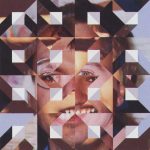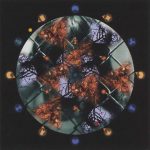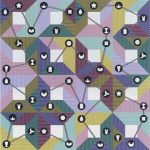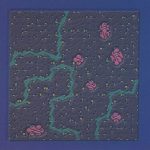Paul Hertz
Most Recent Affiliation:
- Northwestern University
Location:
- Evanston, Illinois, United States of America
Art Paper Reviewer:
Art Works:
-

Ignotus the Mage
Categories: [Performance]
[SIGGRAPH 2006] -

Orai/Kalos
Categories: [Installation]
[SIGGRAPH 2004] -

Time Cycle
Categories: [2D & Wall-Hung]
[SIGGRAPH 2001] -

The Recordatori Series: Prairie
Categories: [2D & Wall-Hung]
[SIGGRAPH 1999]
Writings and Presentations:
-
Title:
Drunk on Technology, Waiting for the Hangover: A Test Plot
Writing Type: Paper
Author(s):
Exhibition: SIGGRAPH 2006: Intersections
Abstract Summary:No abstract available.
[Download PDF]
Title: Erasing Boundaries: Intermedia Art in the Digital Age
Writing Type: Panel / Roundtable
Author(s):
Exhibition: SIGGRAPH 2001: n-space
Abstract Summary:“Intermedia” is a term coined by the Fluxus artist and theorist Dick Higgins which refers to works of art that include structural elements not usually associated with the medium being performed. Although intermedia can be “multimedia” it certainly does not have to be. In this panel we would like to make the distinction between the two terms.
In intermedia, the compositional process works across the boundaries between media or even fuses media. Thus intermedia implies structures that are shared by or translated from one medium to another: in this respect it is a more specifically defined term than multimedia. While it is sometimes called “synesthetic art,” intermedia does not seek to imitate the physiological phenomenon of synesthesia, but approaches it metaphorically. It extends the creation of form across sensory modalities without necessarily promoting a tight coupling of multisensory events. Synesthetic coupling is just one potential contrapuntal technique for intermedia, a kind of parallel movement. Other possibilities abound, and intermedia is just getting started as an artform.
With the advent of digital multimedia and real time interaction and performance with computers, intermedia can now achieve a precision and synchronicity of events that were not possible until the last two decades. Moreover, digital media enable compositional structures to operate at all levels of granularity and with a degree of abstraction that places all media on the same plane. One could argue that digital intermedia is the high-level process that corresponds to the low-level truism: all media is data, a single substance. Intermedia suggests that we explore that substance with all available senses.
This panel will examine the historical concept of intermedia, compositional methods and processes for creating intermedia, issues of sense perception and sensory coupling in the reception of intermedia, and the implications of digital multimedia, real time performance and interaction for the future development of intermedia. We also expect to open the discussion to the metaphoric and even magical qualities associated with synesthesia, and to the relation of multisensory stimuli to memory, but by grounding the panel in compositional practices and structures we hope to avoid some of the pitfalls of interpretation that the mystique of synesthesia often inspires.
While we cannot predict the trajectory of intermedia across the imaginary of the 21″ century, it holds out the possibility of new forms and experiences. At a time when we have begun to suspect that formal invention had collapsed along with the historical avantgarde, this may even permit us a brief moment of euphoria. We would do well to remember how, at the beginning of the 20th century, the cult of synesthesia promised a mystical revelation that did not transpire. At the beginning of the 21st century, intermedia points to a perceptual revelation that may well transpire. The instruments are in our hands and it seems we have only to learn to play them. To what end and for whom? As much as with the formal and technical issues of digital intermedia, we must also grapple with this question.
[Download PDF]
Role(s):




